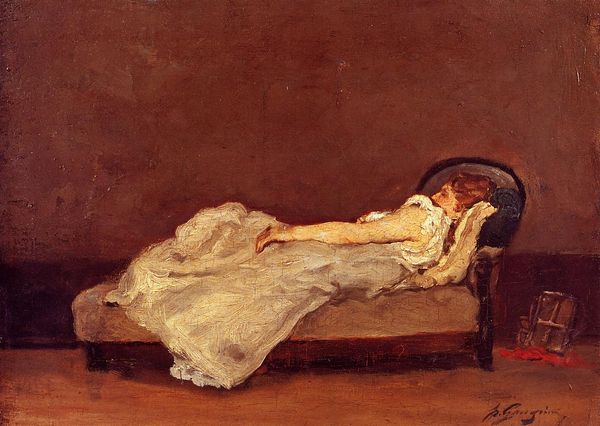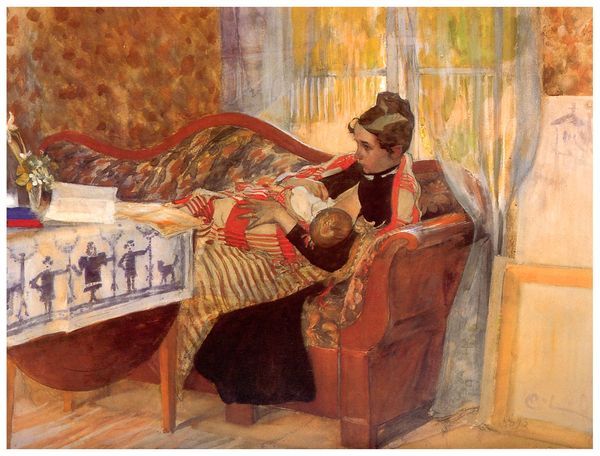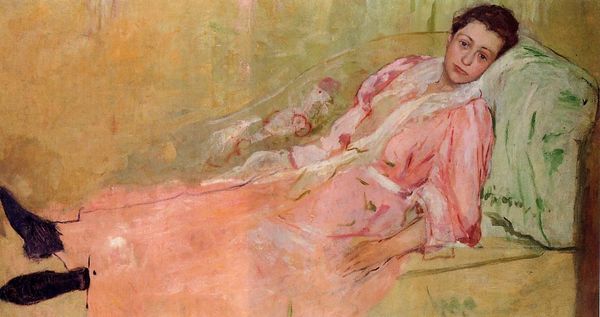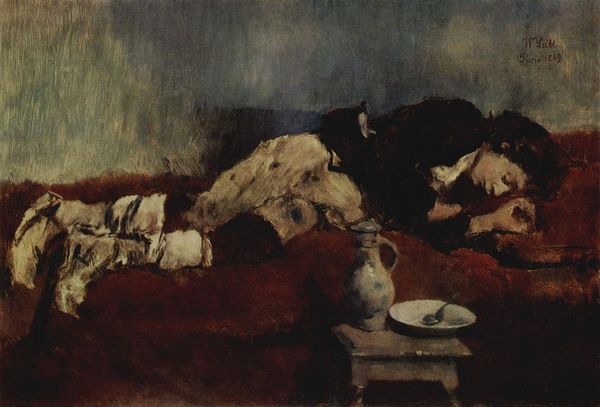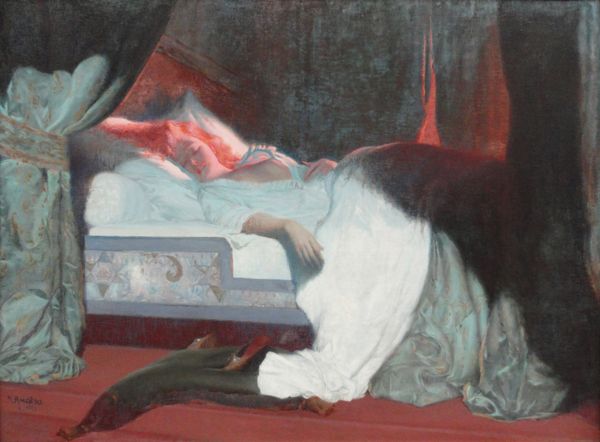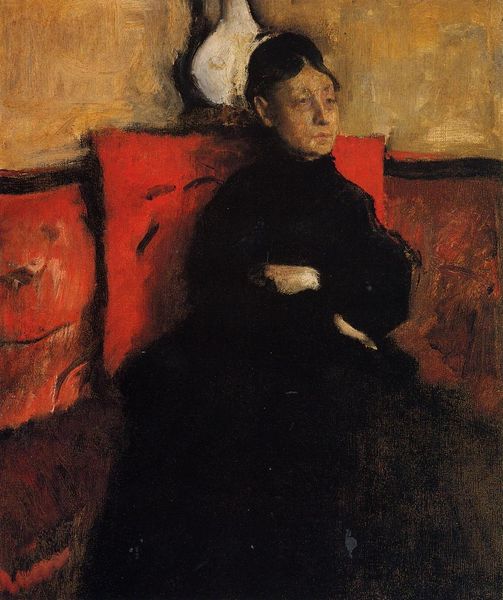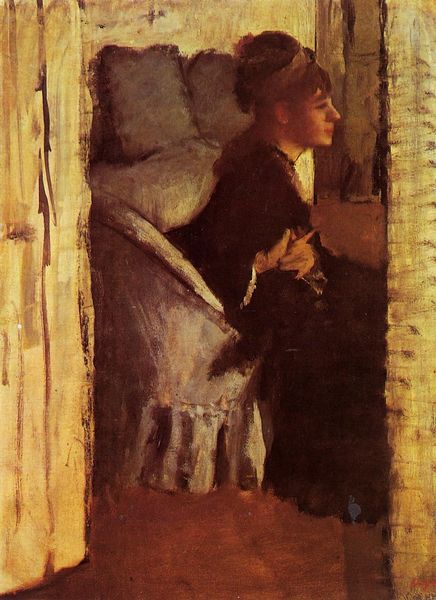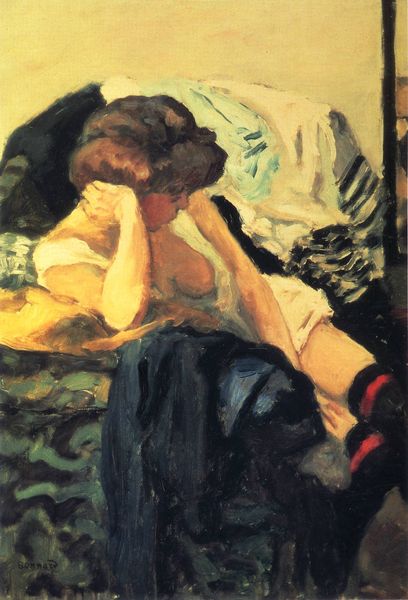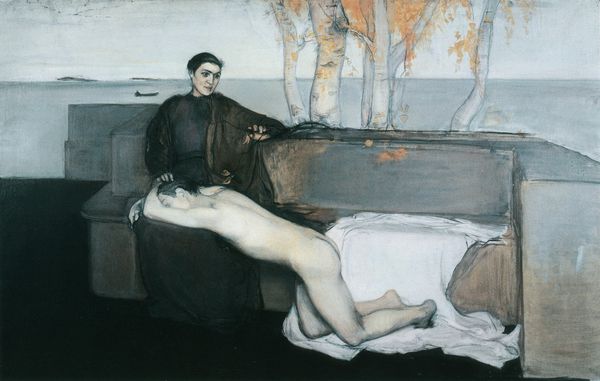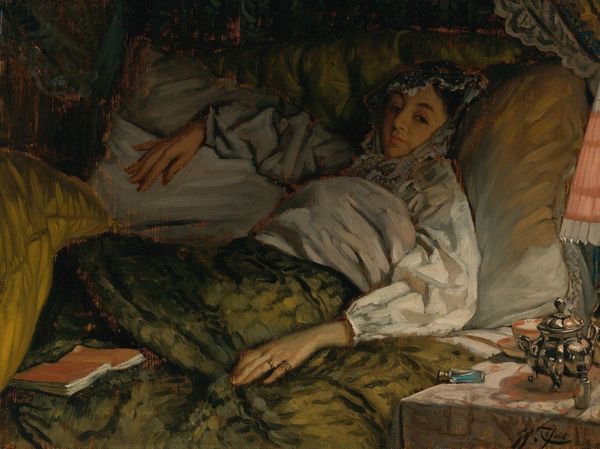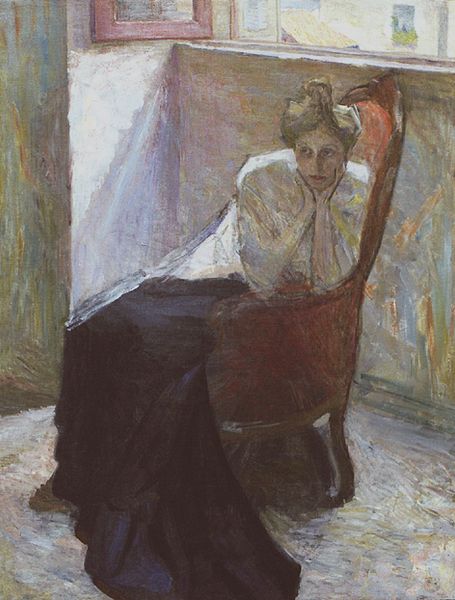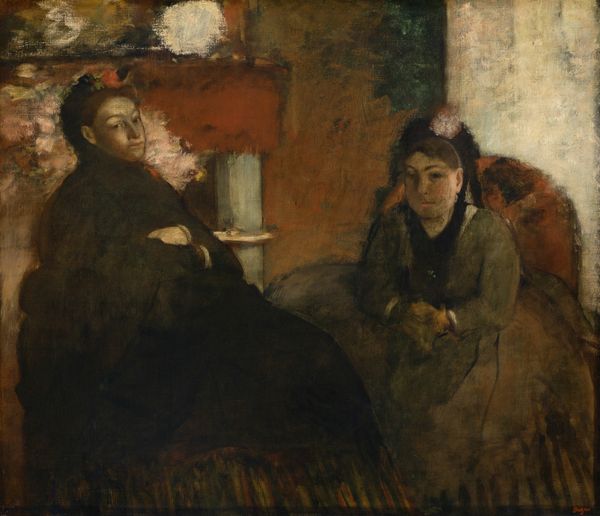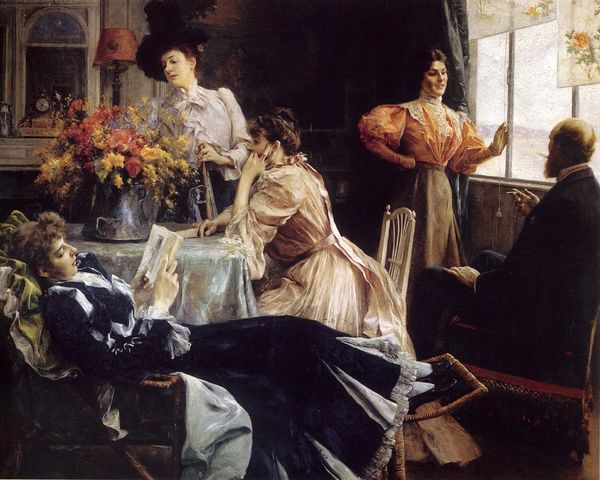
oil-paint
#
portrait
#
impressionism
#
oil-paint
#
oil painting
#
genre-painting
#
portrait art
Dimensions: 65 x 71 cm
Copyright: Public domain
Curator: Here we see "M. and Mme Edouard Manet," painted in 1869 by Edgar Degas. It's an oil on canvas currently housed at the Kitakyushu Municipal Museum of Art. What's your initial reaction to it? Editor: Intimate, almost voyeuristic. I feel like I've stumbled into a private moment of disconnection, a hushed interior filled with unspoken things. The coloring, with its pale whites, and earth tones lends a quality of silence, doesn’t it? Curator: Absolutely. Look at how Degas portrays the materiality of domestic space and gendered labor. Manet is reclining, seemingly idle, while Madame Manet is framed as being physically outside the space, cut off and constrained near to the paneling. We may consider gender as an important facet here, in the context of production within 19th-century Bourgeois domesticity. Editor: I feel the sense of her turning away...is there a creative impasse at play here, the tension between two artists sharing a space, or is it simply domestic estrangement? And I love how the seemingly casually placed racket behind Manet introduces a jolt of color that subtly amplifies his weariness, juxtaposed against the active connotations of sporting equipment. Curator: Exactly, Degas plays with expectation and form. Consider also how the materials were applied, how Degas built up texture that contributes to the hazy impression of memory and emotion here. This isn’t a polished portrait but something far more complex and interesting regarding the artistic practices. Editor: Right. It’s like we are witnessing a candid sketch, something dashed off, capturing the rough edges of human experience rather than striving for classical, ideal form. It leaves you thinking long after you've walked away from it. Curator: Precisely. A look at how the conditions of artistic labor were experienced, both psychologically and in relation to social positioning in family life. It leaves us, quite rightly, questioning. Editor: Beautifully observed; I can't shake this feeling like it’s not only capturing them as artists but as simply, humans, in the quiet moments, which I suppose, for many of us, it is just what the artist aimed for to evoke, ultimately.
Comments
No comments
Be the first to comment and join the conversation on the ultimate creative platform.
